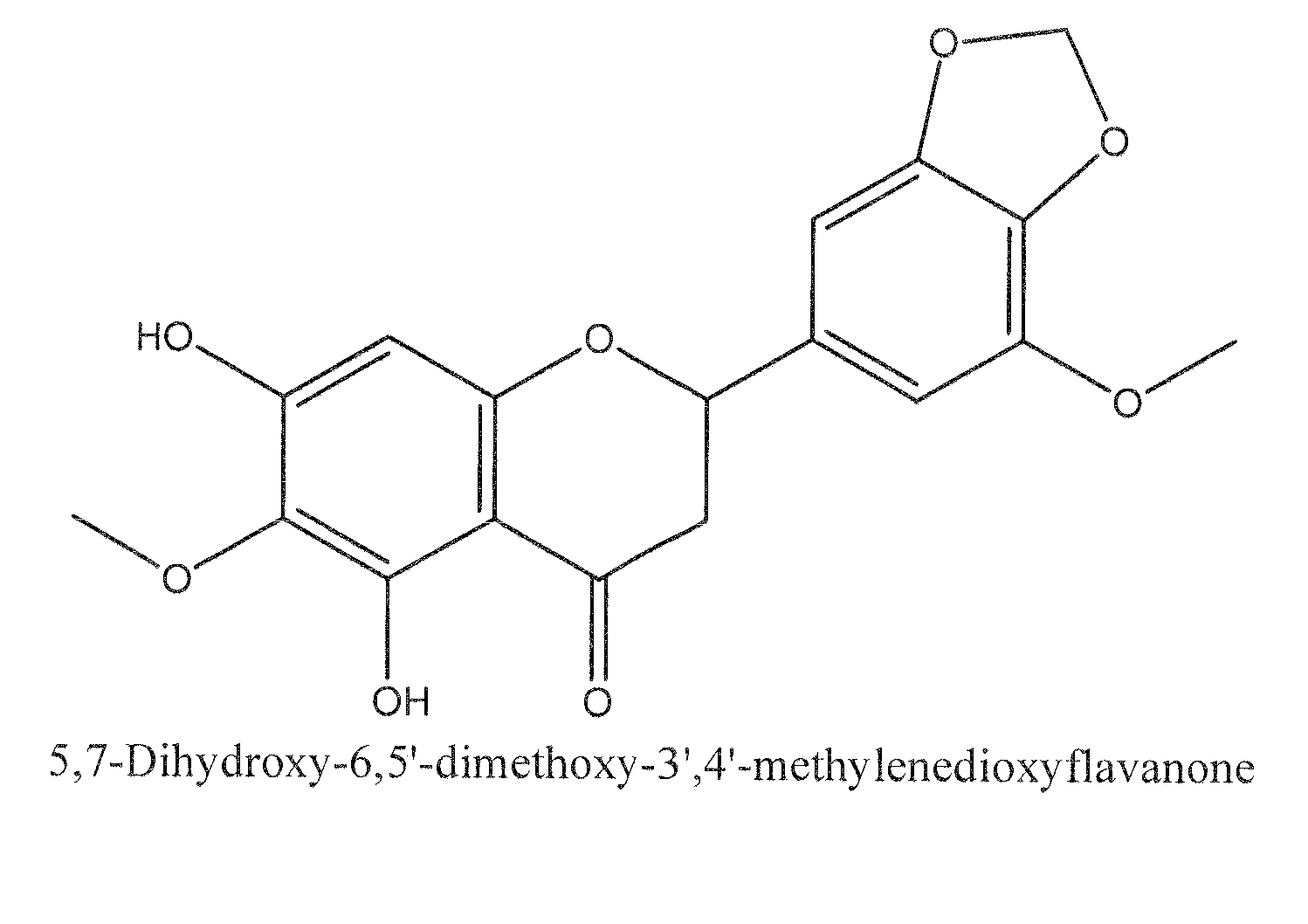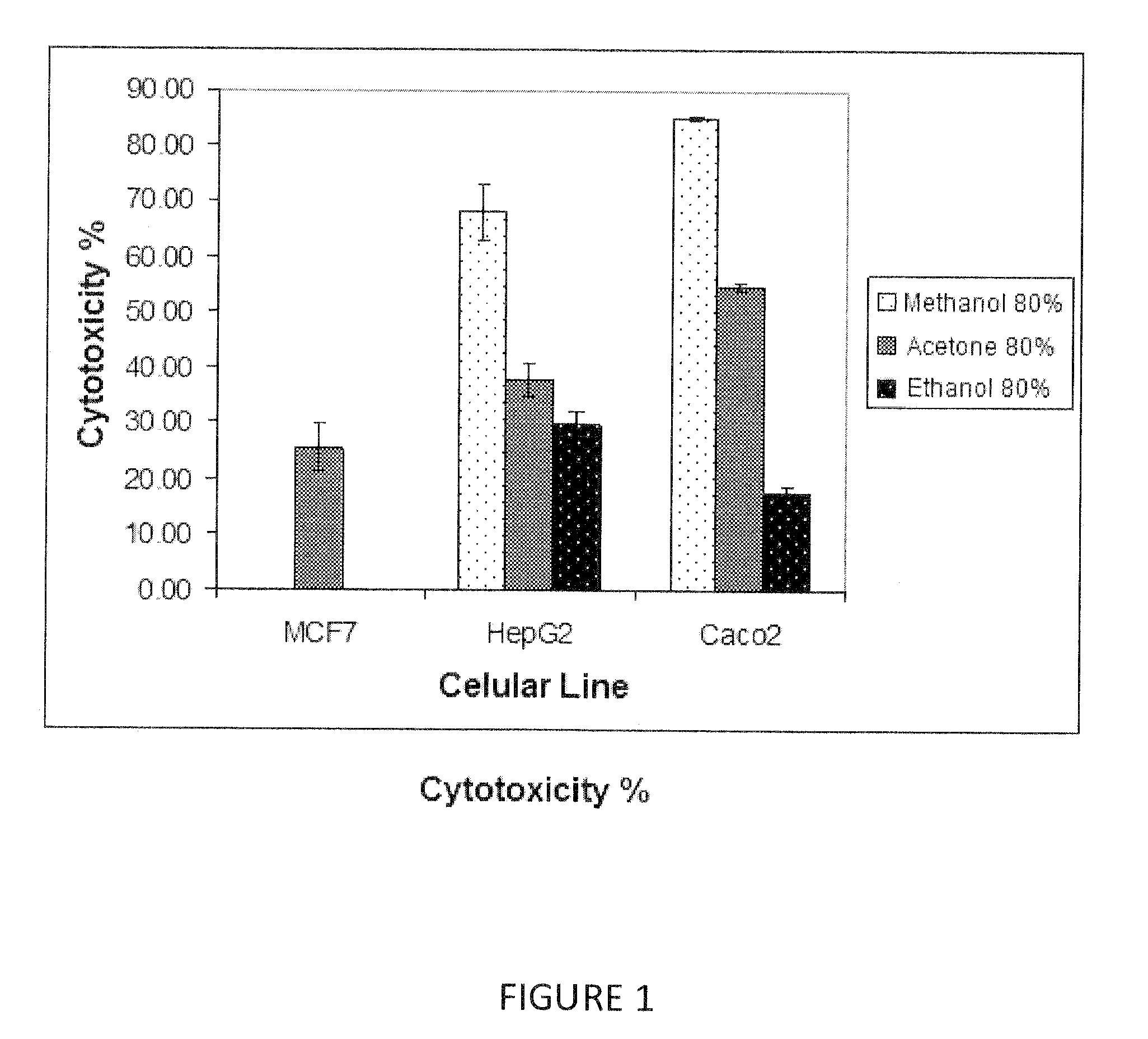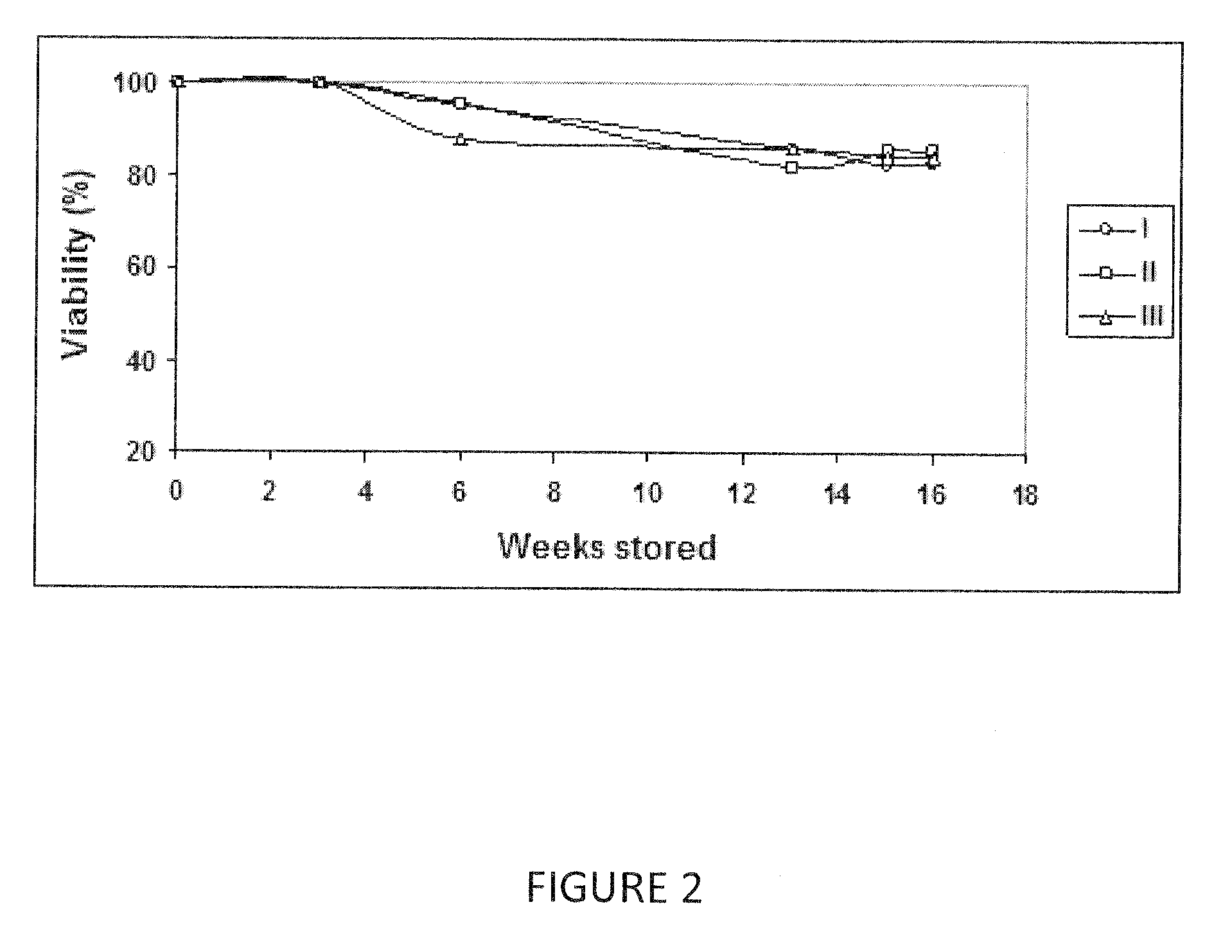Agave syrup extract having anticancer activity
a technology of agave syrup and anticancer activity, which is applied in the direction of plant growth regulators, biocide, biochemical apparatus and processes, etc., can solve the problems of not having any biologic activity, unable to carry out any kind of analysis, and the possible substances and compounds involved in the above-referred biologic effects of aguamiel are not very well known, so as to inhibit the growth of cancer cells
- Summary
- Abstract
- Description
- Claims
- Application Information
AI Technical Summary
Benefits of technology
Problems solved by technology
Method used
Image
Examples
example 1
[0042]An agave syrup was obtained by boiling approximately 10 liters of aguamiel during 5-6 hours until obtaining approximately 1 liter of syrup having 70% of solids, which is stable at ambient conditions and resistant to microbial attacks. The aguamiel is extracted from agaves which are near florescence. The agave is cut (the floral tail is destroyed and a cavity is formed in which the sap or aguamiel is deposited). The cavity is covered with parts of the same maguey in order to avoid animal attacks. Subsequently, the aguamiel is recollected by scratching the maguey in order to stimulate the production of sap.
example 2
Antioxidant Capacity and Anticancerigen Effect of Agave Syrup Extracts Stored for More than Six Months at Ambient Temperature
[0043]In order to obtain an extract, 4 to 5 g of agave syrup produced in Example 1 stored for more than 6 months were mixed with 10 ml of 80% methanol. Subsequently the mix was centrifuged for 5 minutes at 1,000 rpm. The supernatant antioxidant activity was evaluated by means of the ORAC method giving a value of 61.87±4.02 μmols TROLOX equivalents / g sample. The anticancerigen activity in vitro was also evaluated using human colon cancer cells cultivations (Caco-2), breast cancer cells (MCF7), and liver cancer cells (HepG2). The growth inhibition percentage values were obtained using 15 mg / ml (syrup / cultivation media). It was observed that there was no significant effect over the growth of breast cancer cells. However, the growth of colon cancer cells was inhibited by 84.89±0.29 and the growth of liver cells was inhibited by 67.95±4.87.
example 3
Evaluation of the Effect of Solvent Over the Extraction of Anticancerigen Compounds from Agave Syrup
[0044]As in Example 2, in order to obtain an extract, there were taken from 4 to 5 g of agave syrup produced in Example 1 stored for more than 6 months, which were mixed with 10 ml of methanol, acetone or ethanol at an 80% in water. Subsequently the mix was centrifuged and the supernatant antioxidant activity over human cancer cellular lines described in Example 2 was determined, FIG. 1 shows that methanol at an 80% is the best solvent for the extraction of agave syrup compounds having anticancerigen activity. The acetone is the second best solvent for the extraction of agave syrup compounds and it was the only solvent by which applicant was capable of obtaining supernatants having inhibitory growth activity of breast cancer cells (MCF-7). With regard to the supernatants obtained by ethanol at an 80%, it was observed inhibitory growth activity of colon and liver cancer cells only. How...
PUM
| Property | Measurement | Unit |
|---|---|---|
| Fraction | aaaaa | aaaaa |
| Time | aaaaa | aaaaa |
| Concentration | aaaaa | aaaaa |
Abstract
Description
Claims
Application Information
 Login to View More
Login to View More - R&D
- Intellectual Property
- Life Sciences
- Materials
- Tech Scout
- Unparalleled Data Quality
- Higher Quality Content
- 60% Fewer Hallucinations
Browse by: Latest US Patents, China's latest patents, Technical Efficacy Thesaurus, Application Domain, Technology Topic, Popular Technical Reports.
© 2025 PatSnap. All rights reserved.Legal|Privacy policy|Modern Slavery Act Transparency Statement|Sitemap|About US| Contact US: help@patsnap.com



